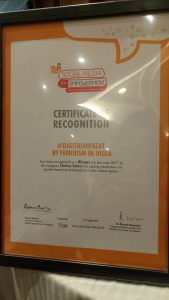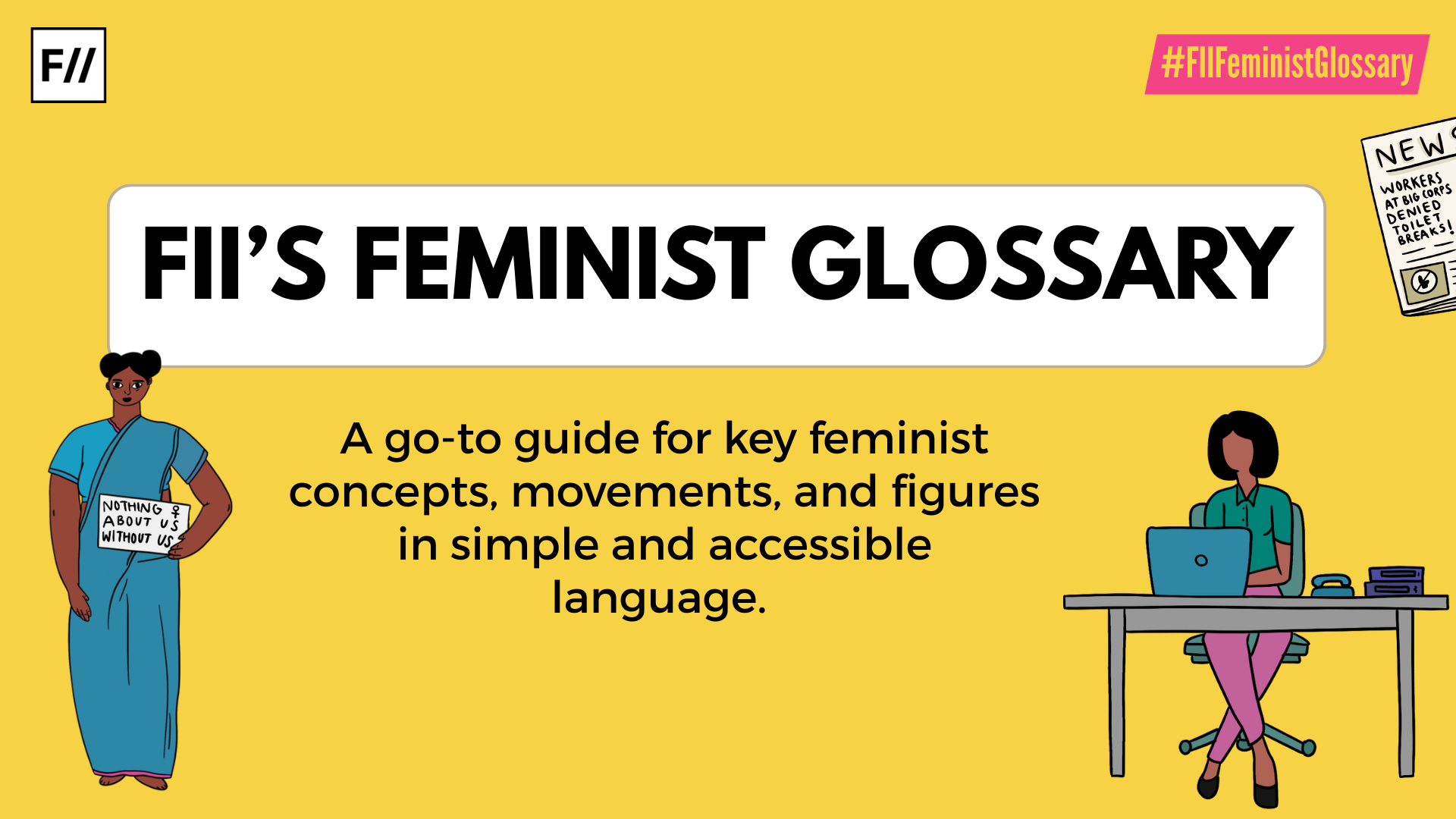[vc_row][vc_column][vc_custom_heading text=”What is Cyber Violence Against Women?” font_container=”tag:h2|text_align:center|color:%23ff0000″ google_fonts=”font_family:Montserrat%3Aregular%2C700|font_style:400%20regular%3A400%3Anormal”][/vc_column][/vc_row][vc_row][vc_column][vc_column_text]In India, as elsewhere all over the world, the online harassment of women and marginalized genders and sexualities is rampant, in contrast to the Internet’s initial premise of equal opportunity and neutrality. What we have today is a flawed internet that reflects the offline world we live in, where women and marginalized communities are abused, harassed, threatened, stalked and violated on a daily basis. This paper aims to analyse the unique threats that women and marginalized sections in India face online and how Indian laws affect these problems. [/vc_column_text][/vc_column][/vc_row][vc_row][vc_column][vc_custom_heading text=”What does our research say?” font_container=”tag:h2|text_align:center|color:%23ff0000″ google_fonts=”font_family:Montserrat%3Aregular%2C700|font_style:400%20regular%3A400%3Anormal”][/vc_column][/vc_row][vc_row][vc_column][vc_column_text]FII in collaboration with Freedom House conducted a research – analysis of media reports involving online harassment of high profile women, a survey of 500 women and marginalized genders and interviews with ten of the respondents (Download the entire report here). We found out:[/vc_column_text][/vc_column][/vc_row][vc_row][vc_column width=”1/4″][vc_round_chart stroke_width=”1″ values=”%5B%7B%22title%22%3A%22Yes%22%2C%22value%22%3A%2257%22%2C%22color%22%3A%22blue%22%7D%2C%7B%22title%22%3A%22No%22%2C%22value%22%3A%2221%22%2C%22color%22%3A%22pink%22%7D%2C%7B%22title%22%3A%22Maybe%20%22%2C%22value%22%3A%2222%22%2C%22color%22%3A%22sandy-brown%22%2C%22custom_color%22%3A%22%234cadc9%22%7D%5D” title=”Have you faced online violence?”][/vc_column][vc_column width=”1/4″][vc_progress_bar values=”%5B%7B%22label%22%3A%22Feminism%22%2C%22value%22%3A%2290%22%2C%22color%22%3A%22bar_red%22%7D%2C%7B%22label%22%3A%22Govt%20%26%20Politics%22%2C%22value%22%3A%2280%22%2C%22color%22%3A%22sandy-brown%22%7D%2C%7B%22label%22%3A%22Religion%22%2C%22value%22%3A%2270%22%2C%22color%22%3A%22bar_green%22%7D%5D” options=”striped,animated” title=”Topics that invite violence” units=”%”][/vc_column][vc_column width=”1/4″][vc_pie value=”84.4″ label_value=”Males” color=”blue” title=”Violence from males or females” units=”%”][/vc_column][vc_column width=”1/4″][vc_progress_bar values=”%5B%7B%22label%22%3A%22Block%22%2C%22value%22%3A%2276.1%22%2C%22color%22%3A%22pink%22%7D%2C%7B%22label%22%3A%22Report%22%2C%22value%22%3A%2258.2%22%2C%22color%22%3A%22mulled-wine%22%7D%2C%7B%22label%22%3A%22No%20response%22%2C%22value%22%3A%2235.3%22%2C%22color%22%3A%22vista-blue%22%7D%5D” options=”striped,animated” title=”Response to online violence” units=”%”][/vc_column][/vc_row][vc_row][vc_column width=”1/4″][vc_progress_bar values=”%5B%7B%22label%22%3A%22Abuse%20and%20hate%20speech%22%2C%22value%22%3A%2261%22%2C%22color%22%3A%22bar_red%22%7D%2C%7B%22label%22%3A%22Derogatory%20comments%20about%20your%20gender%22%2C%22value%22%3A%2256.2%22%2C%22color%22%3A%22bar_blue%22%7D%2C%7B%22label%22%3A%22Mass%20trolling%22%2C%22value%22%3A%2235.7%22%2C%22color%22%3A%22bar_green%22%7D%5D” options=”striped,animated” title=”Violence includes” units=”%”][/vc_column][vc_column width=”1/4″][vc_progress_bar values=”%5B%7B%22label%22%3A%22Self-censorship%22%2C%22value%22%3A%2290%22%2C%22color%22%3A%22bar_blue%22%7D%2C%7B%22label%22%3A%22Mental%20health%20issues%22%2C%22value%22%3A%2270%22%2C%22color%22%3A%22bar_red%22%7D%2C%7B%22label%22%3A%22Public%20defamation%22%2C%22value%22%3A%2255%22%2C%22color%22%3A%22bar_green%22%7D%5D” options=”striped,animated” title=”Affects of online violence” units=”%”][/vc_column][vc_column width=”1/4″][vc_progress_bar values=”%5B%7B%22label%22%3A%22Need%20to%20be%20stronger%22%2C%22value%22%3A%2254.6%22%2C%22color%22%3A%22turquoise%22%7D%2C%7B%22label%22%3A%22More%20options%20to%20report%20and%20block%22%2C%22value%22%3A%2251.6%22%2C%22color%22%3A%22bar_orange%22%7D%2C%7B%22label%22%3A%22Easier%20to%20implement%22%2C%22value%22%3A%2242.6%22%2C%22color%22%3A%22vista-blue%22%7D%5D” options=”striped,animated” title=”Privacy Policies on social media websites” units=”%”][/vc_column][vc_column width=”1/4″][vc_round_chart stroke_width=”2″ values=”%5B%7B%22title%22%3A%22Not%20taken%20seriously%20%22%2C%22value%22%3A%2258.6%22%2C%22color%22%3A%22blue%22%7D%2C%7B%22title%22%3A%22Cops%20not%20aware%22%2C%22value%22%3A%2215.5%22%2C%22color%22%3A%22pink%22%7D%2C%7B%22title%22%3A%22Embarassing%22%2C%22value%22%3A%227.4%22%2C%22color%22%3A%22orange%22%2C%22custom_color%22%3A%22%23ebebeb%22%7D%2C%7B%22title%22%3A%22Waste%20of%20time%22%2C%22value%22%3A%226%22%2C%22color%22%3A%22turquoise%22%2C%22custom_color%22%3A%22%2300c1cf%22%7D%2C%7B%22title%22%3A%22Other%22%2C%22value%22%3A%2212.5%22%2C%22color%22%3A%22purple%22%2C%22custom_color%22%3A%22%235aa1e3%22%7D%5D” title=”Women don’t report because”][/vc_column][/vc_row][vc_row][vc_column][vc_custom_heading text=”What does the cyber law in India say?” font_container=”tag:h2|text_align:center|color:%23ff0000″ google_fonts=”font_family:Montserrat%3Aregular%2C700|font_style:400%20regular%3A400%3Anormal”][/vc_column][/vc_row][vc_row][vc_column width=”1/3″][vc_icon icon_fontawesome=”fa fa-balance-scale” align=”center”][vc_custom_heading text=”Criminal Amendment Act 2013″ font_container=”tag:h3|text_align:center|color:%23ff0000″ google_fonts=”font_family:Montserrat%3Aregular%2C700|font_style:400%20regular%3A400%3Anormal”][vc_column_text]
- Section 354A: demanding sexual favours/showing pornography against will.
- Section 354C: voyeurism and disseminating such information without consent.
- Section 354D: cyberstalking, despite clear indication of disinterest, or monitoring cyber activity.
[/vc_column_text][/vc_column][vc_column width=”1/3″][vc_icon icon_fontawesome=”fa fa-balance-scale” align=”center”][vc_custom_heading text=”Information Technology Act, 2008″ font_container=”tag:h3|text_align:center|color:%23ff0000″ google_fonts=”font_family:Montserrat%3Aregular%2C700|font_style:400%20regular%3A400%3Anormal”][vc_column_text]
- Section 66C: identity theft
- Section 66E: violation of privacy
- Section 67: publication and transmission of obscene content
- Section 67A: publication and transmission of sexually explicit material.
- Section 67B: publication and transmission of child pornography
- Section 72: breach of privacy and publication of material without consent.
[/vc_column_text][/vc_column][vc_column width=”1/3″][vc_icon icon_fontawesome=”fa fa-balance-scale” align=”center”][vc_custom_heading text=”Indecent Representation of Women (Prohibition) Bill, 2012″ font_container=”tag:h3|text_align:center|color:%23ff0000″ google_fonts=”font_family:Montserrat%3Aregular%2C700|font_style:400%20regular%3A400%3Anormal”][vc_column_text]The Indecent Representation of Women (Prohibition) Amendment Bill, 2012 seeks to broaden the scope of the law to cover the audio-visual media and content in electronic form, prescribing stringent penalties which would act as deterrent to violation of the law.
As per the proposed amendments, distribution of material will also include distribution on the internet.[/vc_column_text][/vc_column][/vc_row][vc_row][vc_column][vc_custom_heading text=”What are we doing?” font_container=”tag:h2|text_align:center|color:%23ff0000″ google_fonts=”font_family:Montserrat%3Aregular%2C700|font_style:400%20regular%3A400%3Anormal”][/vc_column][/vc_row][vc_row][vc_column][vc_column_text]In 2016, we launched the #DigitalHifazat campaign alongside our research report that studied how women are subject to online violence during the 16 Days of Activism. The 16 Days of Activism Against Gender-based Violence is a global campaign that was started in 1991.The campaign hopes to raise awareness about gender-based violence as a human rights issue at the local, national, regional and international level.
Based on the findings of our research report, we advocated for a safe and secure internet for all using articles and videos to illustrate the rampant nature of online violence against women.
In 2017, we expanded this campaign to take a broader look at the ways in which women experience the internet – both good and bad. The internet can be a space of violence, but also one of empowerment. We looked at ways in which women use the internet to fight back against oppressive systems of power that seek to limit their voice and expression.
Furthermore, oppression is intersectional, and we hoped to display how different communities of women in India experience the internet – their struggles, their victories, how it empowers them and how they envision #DigitalHifazat – situated within their specific sociopolitical identities and experiences.
With this in mind, we launched a series of 4 videos that answered the questions we had about how women used the internet. The first video was a crowdsourced video where 6 young women spoke about their experiences of the internet in response to an open call on our social media platforms. This was followed by women with disabilities, Dalit women and finally, queer women (and queer Dalit women!), talking about their challenges and victories in the online sphere.[/vc_column_text][/vc_column][/vc_row][vc_row][vc_column][vc_custom_heading text=”#DigitalHifazat Videos” font_container=”tag:h2|text_align:center|color:%23ff0000″ google_fonts=”font_family:Montserrat%3Aregular%2C700|font_style:400%20regular%3A400%3Anormal”][/vc_column][/vc_row][vc_row][vc_column][vc_video link=”https://www.youtube.com/watch?v=gn1wtNDwhmg” align=”center”][vc_video link=”https://www.youtube.com/watch?v=VvYa83i_Tqc&list=PLI5Nd6_IIi07J5Cw6xwMo6vT4Tn8yTfCM”][/vc_column][/vc_row][vc_row][vc_column][vc_custom_heading text=”#DigitalHifazat Stories” font_container=”tag:h2|text_align:center|color:%23ff0000″ google_fonts=”font_family:Montserrat%3Aregular%2C700|font_style:400%20regular%3A400%3Anormal”][/vc_column][/vc_row][vc_row][vc_column][td_block_19 category_id=”1658″ limit=”6″ ajax_pagination=”next_prev”][/vc_column][/vc_row][vc_row][vc_column][vc_custom_heading text=”#DigitalHifazat Posters” font_container=”tag:h2|text_align:center|color:%23ff0000″ google_fonts=”font_family:Montserrat%3Aregular%2C700|font_style:400%20regular%3A400%3Anormal”][/vc_column][/vc_row][vc_row][vc_column][vc_gallery type=”image_grid” images=”17363,17364,17365,17366,17367,17368,17369,17370,17371,17372,17373,17374,17375,17376,17377,17378,31259,30845,30840″ onclick=”img_link_large”][/vc_column][/vc_row][vc_row][vc_column][vc_custom_heading text=”Events & Conferences” font_container=”tag:h2|text_align:center|color:%23ff0000″ google_fonts=”font_family:Montserrat%3Aregular%2C700|font_style:400%20regular%3A400%3Anormal”][/vc_column][/vc_row][vc_row][vc_column width=”1/4″][vc_custom_heading text=”Indian School of Governance, Hyderabad” font_container=”tag:h2|text_align:center|color:%23ff0000″ google_fonts=”font_family:Montserrat%3Aregular%2C700|font_style:400%20regular%3A400%3Anormal”][vc_gallery interval=”3″ images=”17668″][/vc_column][vc_column width=”1/4″][vc_custom_heading text=”Digital Citizen Summit by DEF India, Bengaluru” font_container=”tag:h2|text_align:center|color:%23ff0000″ google_fonts=”font_family:Montserrat%3Aregular%2C700|font_style:400%20regular%3A400%3Anormal”][vc_gallery interval=”3″ images=”17669″][/vc_column][vc_column width=”1/4″][vc_custom_heading text=”Live Talk on #DigitalHifazat with WION Amicus” font_container=”tag:h2|text_align:center|color:%23ff0000″ google_fonts=”font_family:Montserrat%3Aregular%2C700|font_style:400%20regular%3A400%3Anormal”][vc_gallery interval=”3″ images=”18007″][/vc_column][vc_column width=”1/4″][vc_custom_heading text=”Internet Governance Forum (IGF) 2016, Mexico” font_container=”tag:h2|text_align:center|color:%23ff0000″ google_fonts=”font_family:Montserrat%3Aregular%2C700|font_style:400%20regular%3A400%3Anormal”][vc_gallery interval=”3″ images=”17670″][/vc_column][/vc_row][vc_row][vc_column][vc_custom_heading text=”Recognition” font_container=”tag:h2|text_align:center|color:%23ff0000″ google_fonts=”font_family:Montserrat%3Aregular%2C700|font_style:400%20regular%3A400%3Anormal”][vc_column_text]Feminism in India won the Social Media For Empowerment Award 2017 under the Online Safety category for our campaign #DigitalHifazat by the Digital Empowerment Foundation.


 [/vc_column_text][/vc_column][/vc_row][vc_row][vc_column][vc_custom_heading text=”Press & Media Coverage” font_container=”tag:h2|text_align:center|color:%23ff0000″ google_fonts=”font_family:Montserrat%3Aregular%2C700|font_style:400%20regular%3A400%3Anormal”][vc_column_text]1. Call for #DigitalHifazat to combat violence against women in virtual spaces, Factor Daily
[/vc_column_text][/vc_column][/vc_row][vc_row][vc_column][vc_custom_heading text=”Press & Media Coverage” font_container=”tag:h2|text_align:center|color:%23ff0000″ google_fonts=”font_family:Montserrat%3Aregular%2C700|font_style:400%20regular%3A400%3Anormal”][vc_column_text]1. Call for #DigitalHifazat to combat violence against women in virtual spaces, Factor Daily
- Online abuse “affects” 50% plus Indian women using social media, 36% don’t respond due to “lack of support”, Counterview
Keeping the internet safe for women and marginalized communities in India, Access Now
Feminism in India: how simple technologies give women a voice and push shame away, Womanity
Survey Finds Nearly 50% of Women In Indian Cities Face Online Abuse, Fewer Report Them, Indiatimes
Online abuse remains a serious issue in India, NewsX
7. Only a quarter of world’s Internet users got free access in 2016, The Hindu
Freedom on the Net 2016 India Country Report, Freedom House
Digital Violence in India: Silencing Women’s Voices Online and What We Need To Do About It, CIMA Blog[/vc_column_text][/vc_column][/vc_row]
About the author(s)
Feminism In India is an award-winning digital intersectional feminist media organisation to learn, educate and develop a feminist sensibility and unravel the F-word among the youth in India.




